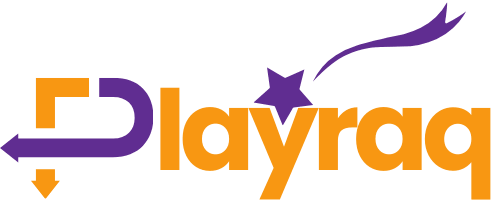Many creatives prefer the process of planning creative strategy. There’s a certain appeal that is associated with thinking of a winning advertisement. Channeling you creative side like Don Draper to create something that draws attention to the viewer and inspires them to buy.
While the research and concepttion phase are important but the analysis phase is where most substantial impact can be achieved. It requires understanding how to analyze the data from your ad creative to enhance campaign performance and enhance your ability to think creatively.
This article will help you study Facebook creatives for ads as an expert. The focus will be on most effective methods for setting up tests for creativity, naming your ads, and defining the KPIs to measure.
Table of Contents
Create Proper Naming Conventions
If you’re looking to keep track of the performance of your ads it is essential to be able to pull quickly the ad information. One of the major obstacles in this regard is the lack of names conventions. In the absence of these conventions, users will be spending endlessly searching for data, instead of using your knowledge to make the right decisions.
Without a well-organized name system the process of identifying and comparing campaigns is nearly impossible. How do you quickly identify the type of audience, creative or message leads to conversions if you’re looking through hundreds of vaguely-named campaigns such as “Test 1” as well as “Campaign ABC”?
The use of proper naming conventions allows you to simplify the management of your ads and quickly identify the factors which cause performance shifts. This format gives clarity, allowing your team to work efficiently and save time searching through the data.
Tips to Set Up Naming Conventions
A well-constructed structure for naming provides clarity right from the beginning. Here’s a brief overview of what you should consider when the name of your ad sets, campaigns and advertisements:
- Campaign level: Include the campaign’s goal (e.g. or conversions or traffic) and the intended audience (e.g. interests-based, demographic) as well as the dates. This allows you to see quickly the goals of the campaign to accomplish.
- Ad Set Level: Specific requirements for targeting this advertising set. This could include things like age, gender interest, location, etc. (e.g. Instagram vs. Facebook. Instagram).
- Ad level: Indicate the creative elements that are being evaluated including the kind of advertisement (static or video or carousel) and the angle of messaging and any calls for actions. This will give you a clear view of the ad’s direction in creative.
Standardizing these elements can help your data become easier to access and more organized this is the initial step to a more practical analysis of your ads.
Set Up Proper Tagging in Your Creative Tracking Tool
A proper tagging system within your advertising reporting tool is essential for analyzing the performance of your ads, particularly when running multiple creatives concurrently.
How Tagging Works
Tagging lets you organize every creative piece of work in specific categories, like:
- Short Description of Campaign: What campaign, or brief for strategic planning is this ad a part of?
- Theme/Messaging Angle: The main message or theme that the advertisement is promoting.
- Hook used: The attention-grabbing element at the start of the advertisement.
- Creative Type: The ad could be a repeat of an earlier version, or is a totally new design.
- Custom tags: Other categories relevant to your research for example, particular target audiences or platforms.
The significance of tag
Tags can help you identify patterns in performance of items you are trying, such as the message angle. We also use tags to collect data by brief, so that we can determine whether the creative work we produce is enhancing short by brief.
How to Analyze the performance of Facebook ads?
In analyzing Facebook ads it is important to begin with a broad overview prior to diving into specifics. This will allow you to detect general patterns and trends that can help you to conduct more thorough analysis.
Important Areas to Study
- Format: Start by looking at the performance of various advertising formats (e.g. static, video, carousel). Determine which formats drive the highest engagement and conversions.
- Latest brief (CSR): Compare the effectiveness of advertisements that are tied to your latest briefs (also known as CSR (Campaign Strategy Reports). This will help you determine how the most recent strategies connect with your customers.
- Marketing Angles: Discover the rational and emotional marketing message angles that will drive the most effective performance.
- Creative Theme/Design: Know which creative themes or templates are the most effective to your particular account. Things such as Us vs. Them, UGC, etc.
- Specific A/B Tests: If you are running tests using A/B take a look at the results to determine which variants have the best results. It could be testing different headlines or calls to action or even images.
- By Creator: When you’re working alongside multiple influencers or creators examine the effectiveness of ads by specific creator. This can help identify which creators provide the greatest value from your ads.
How to Analyze the Results of Facebook Ads
After examining the top-level performance, it’s now time to look at the Facebook ads’ metrics that indicate either positive or negative results.
- CPA (Cost Per Acquisition) or CAC (Customer Acquisition Cost): This KPI measures the cost of acquiring a new client. Numerous KPIs are involved in this, for example, your CPC and website conversion rate.
- CTR (Click-Through Rate): The percentage of viewers (Impressions) who clicked through your advertisement after viewing it. A greater CTR implies that your advertisement is engaging and relevant to the people who view it.
- CPC (Cost Per Click): Measures the average cost per click for your advertisement. Monitoring CPC can help you manage your budget and improve your spending.
- ROAS (Return on Ad Spend): Indicates the average amount of money you earn per dollar spent on advertising. A higher ROAS is a sign of more successful campaigns.
Analyzing how ads perform is the best way to develop and develop as a strategist. You can channel the self-defense Don Draper. This guide will be the starting step to becoming a professional advertising analyst.

